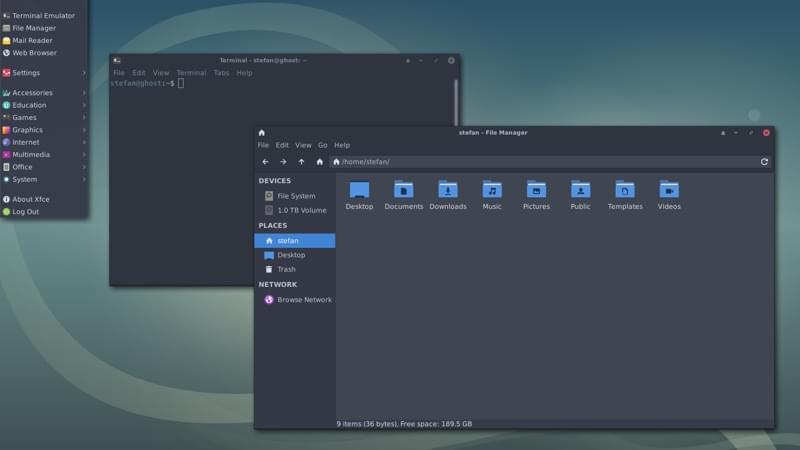Introduction to Data Integrity in Linux Administration
In the realm of Linux System Administration, few tasks are as critical as data preservation. Whether you are managing a personal Ubuntu Tutorial server, a high-availability Red Hat Linux cluster, or a fleet of Docker containers, the integrity of your data is paramount. Data loss can occur due to hardware failure, human error, malicious attacks, or software corruption. Therefore, implementing a robust Linux Backup strategy is not merely a suggestion; it is a mandatory requirement for operational continuity.
A widely accepted standard in the industry is the “3-2-1 Rule.” This strategy dictates that you should keep three copies of your data, stored on two different types of media, with one copy kept offsite. While this concept sounds simple, implementing it effectively within a Linux Terminal environment requires a deep understanding of Bash Scripting, Linux File Systems, and the specific requirements of the applications running on your servers.
This article will guide you through the essential methodologies of backing up Linux systems. We will explore file-level backups using standard Linux Utilities, dive deep into the complexities of Linux Database backups (involving MySQL Linux and PostgreSQL Linux), and demonstrate how to automate these processes using Python Scripting. We will also touch upon modern tools like BorgBackup and how to integrate these strategies into a broader Linux DevOps workflow.
Section 1: Core Concepts and File-Level Backups
Before diving into complex automation, it is essential to master the foundational tools available in almost every Linux Distribution, from Debian Linux to Arch Linux. The two most potent tools in the arsenal of a System Administrator are tar and rsync.
Understanding Incremental Backups with Rsync
Rsync is a fast and versatile file-copying tool. It is famous for its delta-transfer algorithm, which reduces the amount of data sent over the network by sending only the differences between the source files and the existing files in the destination. This makes it ideal for Linux Networking backups over Linux SSH.
When managing Linux Permissions and File Permissions, it is crucial to preserve the metadata (ownership, timestamps, and modes). Below is a practical Bash Scripting example that performs an incremental backup of a critical directory, rotating snapshots to save space.
#!/bin/bash
# Configuration
SOURCE_DIR="/var/www/html"
BACKUP_ROOT="/mnt/backup_drive"
DATE=$(date +%Y-%m-%d-%H%M%S)
CURRENT_BACKUP="$BACKUP_ROOT/backup-$DATE"
LATEST_LINK="$BACKUP_ROOT/latest"
# Ensure backup directory exists
mkdir -p "$BACKUP_ROOT"
echo "Starting backup of $SOURCE_DIR..."
# Rsync Command Explanation:
# -a: archive mode (preserves permissions, owner, groups, times)
# -v: verbose
# --delete: delete extraneous files from dest dirs
# --link-dest: hardlink to files in DIR unchanged (deduplication)
rsync -av --delete \
--link-dest="$LATEST_LINK" \
"$SOURCE_DIR/" \
"$CURRENT_BACKUP"
# Update the 'latest' symlink to point to the new backup
rm -rf "$LATEST_LINK"
ln -s "$CURRENT_BACKUP" "$LATEST_LINK"
echo "Backup completed successfully at $CURRENT_BACKUP"This script utilizes hard links (--link-dest). If a file hasn’t changed, rsync creates a hard link to the previous backup rather than copying the file again. This saves massive amounts of disk space, a critical consideration in Linux Disk Management.
Section 2: Database Backups and Transactional Integrity
Backing up files is straightforward, but backing up a running Linux Database requires handling data consistency. Simply copying the raw data files (like /var/lib/mysql) while the database server is running can lead to corruption because data might be in the middle of a transaction.
The Role of SQL in Backup Verification

To understand what we are backing up, we must understand the structure of the data. In a MySQL Linux or PostgreSQL Linux environment, we deal with schemas, indexes, and transactions. A proper backup strategy often involves dumping the logical structure and data into a SQL file.
Below is a SQL example demonstrating a schema with an index and a transaction. When performing a logical backup (using tools like mysqldump or pg_dump), the backup tool ensures that the transaction logic is preserved so that the restored data is ACID compliant.
-- EXAMPLE: A critical financial schema that requires consistent backups
-- 1. Schema Definition
CREATE TABLE IF NOT EXISTS transaction_audit (
transaction_id SERIAL PRIMARY KEY,
user_id INT NOT NULL,
amount DECIMAL(10, 2) NOT NULL,
transaction_type VARCHAR(50),
timestamp TIMESTAMP DEFAULT CURRENT_TIMESTAMP
);
-- 2. Index Creation for Performance
-- Backups must preserve these indexes to ensure performance after restore
CREATE INDEX idx_user_transaction ON transaction_audit(user_id, timestamp);
-- 3. Simulating a Transaction
-- A backup taken during this block must either capture ALL of it or NONE of it.
START TRANSACTION;
INSERT INTO transaction_audit (user_id, amount, transaction_type)
VALUES (101, 500.00, 'DEPOSIT');
INSERT INTO transaction_audit (user_id, amount, transaction_type)
VALUES (102, -200.00, 'WITHDRAWAL');
-- If a file-level backup runs here without locking, data is corrupted.
COMMIT;
-- 4. Query to Verify Data Integrity post-restore
SELECT count(*) as total_transactions, sum(amount) as net_flow
FROM transaction_audit;When you run a backup utility like mysqldump --single-transaction, it ensures that the backup represents a snapshot of the database at a single point in time, respecting the START TRANSACTION and COMMIT boundaries shown above. Without this understanding of SQL transactions, a Linux Administrator might create broken backups.
Section 3: Advanced Automation with Python and Metadata Tracking
As your infrastructure grows, perhaps moving toward Linux Cloud solutions like AWS Linux or Azure Linux, simple Bash scripts may become difficult to maintain. Python Scripting offers a robust alternative for Linux Automation, allowing for better error handling, logging, and integration with monitoring tools.
A sophisticated backup strategy involves not just taking the backup, but logging the metadata of that backup (size, duration, success/failure) into a central registry. This is a common pattern in Linux DevOps.
Python Backup Orchestrator
The following Python Linux script demonstrates how to execute a backup command and log the result into a local SQLite database. This combines System Programming concepts with database interaction.
import subprocess
import sqlite3
import datetime
import os
# Configuration
DB_FILE = "/var/log/backup_audit.db"
BACKUP_SOURCE = "/etc/nginx" # Example: Backing up Linux Web Server config
BACKUP_DEST = "/tmp/nginx_backup.tar.gz"
def init_db():
"""Initialize the audit database schema."""
conn = sqlite3.connect(DB_FILE)
cursor = conn.cursor()
cursor.execute('''
CREATE TABLE IF NOT EXISTS backup_logs (
id INTEGER PRIMARY KEY AUTOINCREMENT,
backup_source TEXT,
status TEXT,
file_size_bytes INTEGER,
timestamp DATETIME DEFAULT CURRENT_TIMESTAMP
)
''')
conn.commit()
conn.close()
def perform_backup():
"""Executes the tar command and logs the result."""
start_time = datetime.datetime.now()
status = "FAILED"
size = 0
try:
# Using tar to compress the directory
cmd = ["tar", "-czf", BACKUP_DEST, BACKUP_SOURCE]
subprocess.check_call(cmd)
# Check file size if successful
if os.path.exists(BACKUP_DEST):
size = os.path.getsize(BACKUP_DEST)
status = "SUCCESS"
except subprocess.CalledProcessError as e:
print(f"Backup failed: {e}")
except Exception as e:
print(f"An error occurred: {e}")
return status, size
def log_result(status, size):
"""Insert the backup result into the database."""
conn = sqlite3.connect(DB_FILE)
cursor = conn.cursor()
cursor.execute('''
INSERT INTO backup_logs (backup_source, status, file_size_bytes)
VALUES (?, ?, ?)
''', (BACKUP_SOURCE, status, size))
conn.commit()
conn.close()
print(f"Logged backup status: {status}")
if __name__ == "__main__":
init_db()
backup_status, backup_size = perform_backup()
log_result(backup_status, backup_size)This script introduces a level of observability. By querying the SQLite database, you can easily generate reports on backup reliability over time, which is essential for System Monitoring.
Section 4: Modern Deduplication and Encryption Tools
While tar and rsync are classics, modern Linux Tools like BorgBackup (Borg) have revolutionized backup strategies. Borg provides efficient deduplication (storing only changes, similar to git), compression, and authenticated encryption. This is particularly relevant for Linux Security compliance.
When using Borg, you initialize a repository and then create archives within it. The deduplication happens at the block level, meaning if you change one byte in a large file, only the changed block is stored.
Implementing BorgBackup
![Xfce desktop screenshot - xfce:4.12:getting-started [Xfce Docs]](https://docs.xfce.org/_media/xfce/4.12/slider-desktop.jpg)
Here is how you might set up a secure, encrypted backup workflow using Borg. This assumes you have installed the tool via your package manager (e.g., apt install borgbackup on Ubuntu Tutorial systems or yum install borgbackup on CentOS).
# 1. Initialize the repository with encryption
# This sets up the secure vault. You will be prompted for a passphrase.
borg init --encryption=repokey /mnt/backup_drive/borg_repo
# 2. Create a backup archive
# The archive name includes the timestamp
borg create --stats --progress \
/mnt/backup_drive/borg_repo::home-backup-{now:%Y-%m-%d} \
/home/user/documents \
/etc
# 3. Prune old backups (Retention Policy)
# Keep 7 daily, 4 weekly, and 6 monthly backups
borg prune -v --list --keep-daily=7 --keep-weekly=4 --keep-monthly=6 \
/mnt/backup_drive/borg_repo
# 4. List available archives
borg list /mnt/backup_drive/borg_repoThis approach adheres to high security standards. Even if the physical drive is stolen, the data remains inaccessible without the encryption key. This is a vital layer of defense in Linux Security.
Best Practices and Optimization
Implementing the scripts and tools above is only half the battle. To ensure a truly resilient Linux Server environment, consider the following best practices:
1. Verify and Test Restores
A backup is useless if it cannot be restored. Regularly perform “fire drills” where you attempt to restore data from your backups to a test environment. This validates your Linux File System integrity and ensures your SQL dumps are valid.
2. Security and Permissions
Backup files often contain sensitive data (SSH keys, database passwords, Linux Users configuration). Ensure that your backup directories are readable only by the root user or a dedicated backup user. Use Linux Firewall rules (like iptables) to restrict network access to backup servers.

3. Monitoring and Alerts
Integrate your backup scripts with monitoring tools. You can use Ansible to deploy monitoring agents or use simple cron jobs that email you upon failure. Tools like htop or top command can help you analyze the performance impact of running compression-heavy backups during production hours.
4. Offsite Storage
Adhering to the 3-2-1 rule, ensure one copy goes offsite. This could be an S3 bucket (using AWS Linux tools), a remote VPS, or a physical drive taken off-premises. This protects against physical disasters like fire or flood.
Conclusion
Mastering Linux Backup strategies is a journey that spans from understanding basic Linux Commands to implementing complex Python Automation and database management. By combining the file-level efficiency of rsync, the transactional awareness of SQL backups, and the modern features of tools like BorgBackup, you can build a fortress around your data.
Whether you are a beginner following a Linux Tutorial or a seasoned expert in Linux Kernel development, the principles remain the same: automate, encrypt, and verify. Start implementing these scripts today to ensure that your critical work files, family photos, and enterprise databases remain safe and recoverable, no matter what challenges your infrastructure faces.




